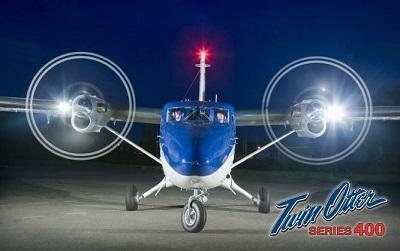Perils of Open Water Twin Otter Operations
Federal authorities are endeavoring to determine if a Saturday, 20 May 2023 accident in which a de Havilland DHC-6 Twin Otter went down off the Pacific coast California’s San Mateo County is attributable to a malfunction of the aircraft’s fuel system.

The mishap claimed the lives of the twin-engine turboprop’s two pilots.
The accident aircraft reportedly departed Santa Rosa, California’s Charles M. Schulz–Sonoma County Airport (STS) bound for Honolulu, Hawaii’s Daniel K. Inouye International Airport (HNL). Perspicacious readers wondering what madness underlies an attempted STS-HNL crossing in a DHC-6 are advised to read on.
Shortly into the flight—at a point approximately 61-nautical-miles off the California coast—the Twin Otter’s pilots radioed Oakland’s Air Route Traffic Control Center (ARTCC) for purpose of advising air traffic controllers of a developing emergent situation.
The Twin Otter’s crew reported mechanical problems had compelled them to reverse course and take up an easterly heading toward Half Moon Bay—a California coastal city some 62-nautical-miles southwest of the aircraft’s STS departure point. The Twin Otter pilots made clear they did not expect to make Half Moon Bay.
Oakland ARTCC alerted the U.S. Coast Guard of the imperiled aircraft, and in short order, a USCG helicopter was dispatched to intercept the eastbound Twin Otter.

The helicopter’s crew sighted the downed DHC-6 floating, half-submerged, about 35-nautical-miles west of Half Moon Bay. A USCG rescue swimmer located both the aircraft’s occupants in the cockpit. Neither was responsive. Coast Guard officials stated the pilots’ bodies were not immediately removed from the aircraft.
On Monday, 22 May, the San Mateo County Coroner's Office reported its personnel had yet to receive the decedents’ bodies for identification. The office raised the possibility subject bodies would be delivered elsewhere—if at all.
The National Transportation Safety Board, which is investigating the occurrence, cited fuel starvation as a possible cause for the Twin Otter’s loss.
Fuel starvation differs from fuel exhaustion in the sense that the former denotes a state in which extant and usable fuel fails to flow from a containment vessel to the combustion chamber of an operating engine. Conversely, fuel exhaustion denotes a state in which a finite supply of fuel has been depleted utterly.
NTSB spokesperson Sarah Taylor Sulick disclosed the accident aircraft had been retrofitted with a supplemental fuel system comprising, in part, a number of ferry-tanks. Mr. Sulick elaborated: "At this time, investigators believe there was enough fuel, but the system wasn't properly transferring the fuel from the added ferry tanks to the main tanks.”
The NTSB has contracted a salvage concern to retrieve the accident aircraft’s wreckage.
Currently, NTSB investigators are collecting information pertaining to the lost Twin Otter’s maintenance history, the deceased pilots' backgrounds and training, and satellite communication germane to the accident flight. The NTSB’s preliminary report on the accident is expected to be released by 09 June 2023.
 Sierra Space Repositions Dream Chaser for First Mission
Sierra Space Repositions Dream Chaser for First Mission ANN's Daily Aero-Term (05.10.24): Takeoff Roll
ANN's Daily Aero-Term (05.10.24): Takeoff Roll Aero-News: Quote of the Day (05.10.24)
Aero-News: Quote of the Day (05.10.24) Aero-News: Quote of the Day (05.11.24)
Aero-News: Quote of the Day (05.11.24) ANN's Daily Aero-Term (05.11.24): IDENT Feature
ANN's Daily Aero-Term (05.11.24): IDENT Feature




